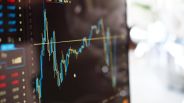A group of researchers suggested that the cell phone data may help to track down the spread of infectious diseases seasonally.
The diverse patterns enveloping the manner with which humans gather and interact are said to have an impact on the seasonal and annual occurrence of infectious disease outbreaks. However, the foundation of this assumption has not been firmly established because information regarding the travel behavior and population fluctuation over time is scarce. With this, experts have not been given the opportunity to obtain quantitative data regarding this matter. At present, scientists rely on travel times, surveys and road networks to determine actual population movements, particularly those who belong to the low-income bracket. Cell phones may supply innovative data about human travels; however, its contribution to epidemiology in terms of determining population density is not well understood.
The researchers from the Princeton University and Harvard University decided to make a study that can help determine the relevance of mobile phone data in tracking human travels and subsequently, the spread of infectious diseases. They utilized mobile phone call records of more than 15 million anonymous individuals to monitor the transmission of Rubella in Kenya. The region where the routing towers were located, as well as the timing of each call and text between 14,816,512 subscribers during the period of June 2008 to June 2009 (excluding February 2009) were monitored in order to come up with quantitative data that can help detect travel patterns between provinces. The researchers then compared these data with long-term and precise data about the incidence of Rubella to identify the relationship between disease spread and factors associated with human aggregation in this situation. After the comparative investigation, the researchers found that the mobile phone and long-term data collated matched. For example, both datasets revealed that within a year, Rubella peaked during the months of September, February and May. With this, the researchers were able to show that cellphone movement may help to predict the patterns of infectious disease transmission.
"The potential of mobile phone data for quantifying mobility patterns has only been appreciated in the last few years, with methods pioneered by authors on this paper," said Amy Wesolowski, lead author and a postdoctoral fellow at Harvard's School of Public Health.
The complete findings and discussion of the study, published [pdf] in the journal Proceedings of the National Academy of Sciences, were able to emphasize how cell phone data can serve as a valuable tool for analyzing the essential things that may influence epidemics and outbreaks. The authors now hope to apply their study methods in the study of measles epidemiology, as well as other diseases driven by human movement including cholera and malaria.
Photo: Sam Churchill | Flickr
ⓒ 2026 TECHTIMES.com All rights reserved. Do not reproduce without permission.




